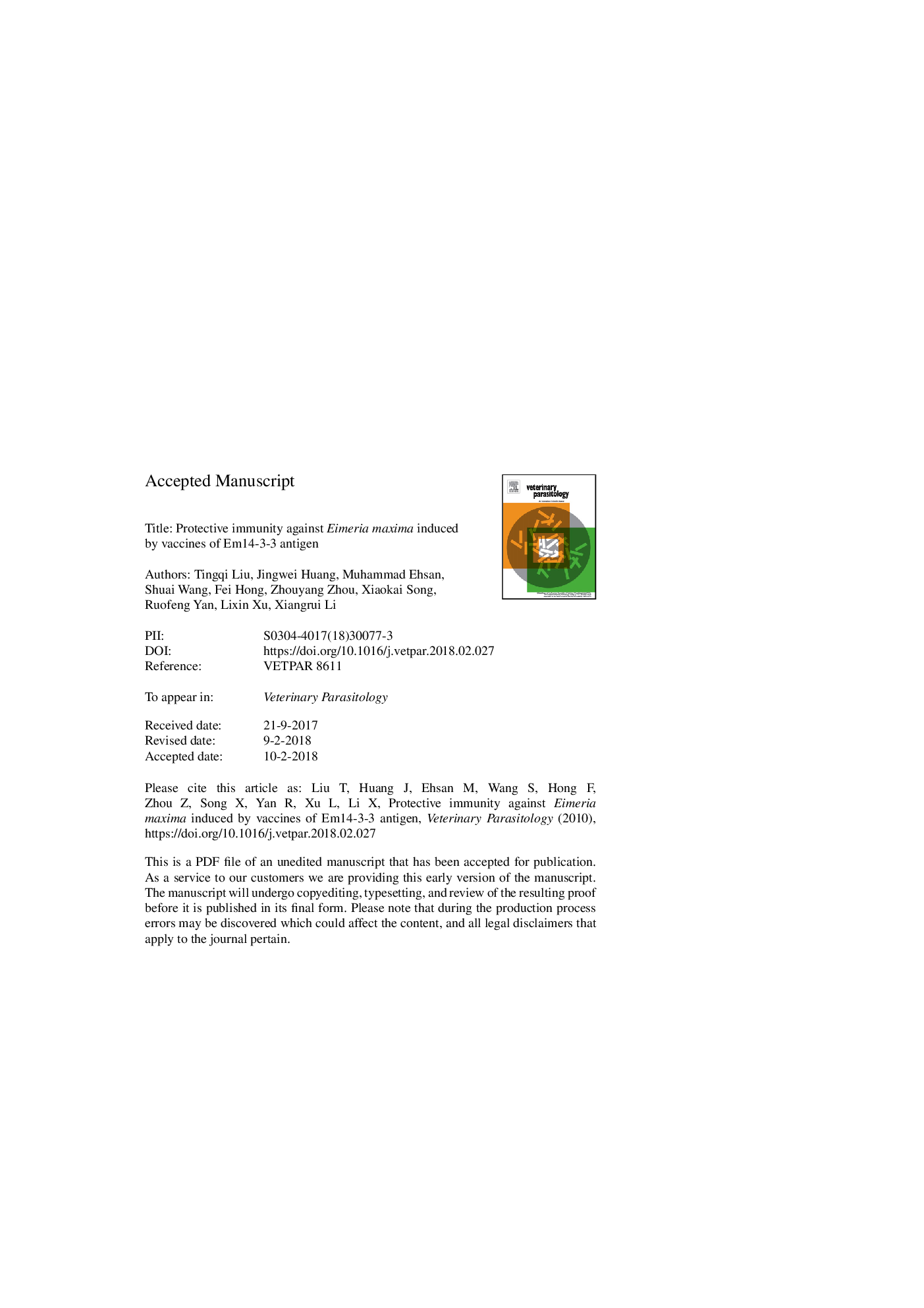| Article ID | Journal | Published Year | Pages | File Type |
|---|---|---|---|---|
| 8506066 | Veterinary Parasitology | 2018 | 31 Pages |
Abstract
Eimeria maxima 14-3-3 (Em14-3-3) open reading frame (ORF) which consisted of 861 bp encoding a protein of 286 amino acids was successfully amplified and sequenced. Subsequently, the Em14-3-3 ORF was subcloned into pET-32a (+) and pVAX1, respectively. RT-PCR and immunoblot analyses confirmed that the target gene was successfully transcribed and expressed in vivo. Immunofluorescence analysis showed that Em14-3-3 was expressed in both the sporozoites and merozoites. The animal experiments demonstrated that both rEm14-3-3 and pVAX1-14-3-3 could clearly alleviate jejunum lesions and body weight loss. The Em14-3-3 vaccines could increase oocyst decrease ratio, as well as produce an anticoccidial index of more than 165. The percentages of CD4+ in both the Em14-3-3 immunized groups were much higher, when compared with those of PBS, pET32a (+), and pVAX1 controls (Pâ¯<â¯0.05). Similarly, the anti-Em14-3-3 antibody titers of both rEm14-3-3 and pVAX1-14-3-3 immunized groups showed higher levels compared with those of PBS, pET32a (+), and pVAX1 controls (Pâ¯<â¯0.05). The IFN-γ and tumor growth factor-β (TGF-β) levels showed signiï¬cant increments in the rEm14-3-3 and pVAX1-14-3-3 immunized groups, when compared with those in the negative controls (Pâ¯<â¯0.05). These results demonstrated that Em14-3-3 could be used as a promising antigen candidate for developing vaccines against E. maxima.
Keywords
Related Topics
Life Sciences
Agricultural and Biological Sciences
Animal Science and Zoology
Authors
Tingqi Liu, Jingwei Huang, Muhammad Ehsan, Shuai Wang, Hong Fei, Zhouyang Zhou, Xiaokai Song, Ruofeng Yan, Lixin Xu, Xiangrui Li,
